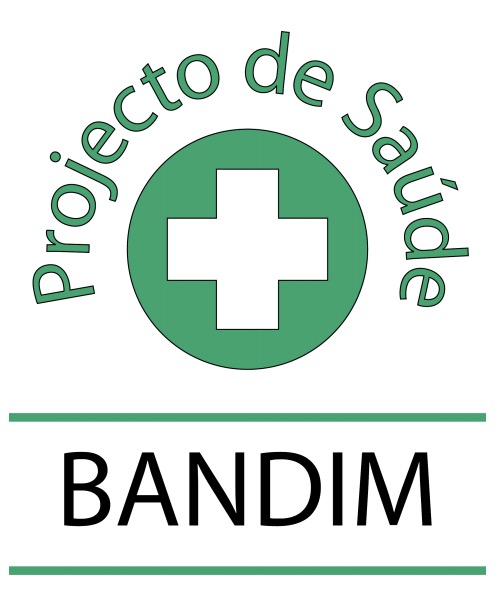About Bandim Health Project
Bandim Health Project is a health and demographic surveillance system site situated in Guinea-Bissau, West Africa
Bandim Health Project (BHP) follows a population of more than 200,000 individuals in urban and rural Guinea-Bissau. This provides a unique platform for conducting health research. One of the major research areas is to study the real life effects of vaccines, vitamin A and other health interventions.
Historically, the Danish part of the BHP was placed at Statens Serum Institut (SSI) in Copenhagen, Denmark. Based on BHP’s research, in 2012, the Danish National Research Foundation funded the establishment of a Center of Excellence, Research Center for Vitamins and Vaccines (CVIVA) at SSI. In 2020, most of the CVIVA group moved to University of Southern Denmark (SDU), where the Danish part of BHP is now physically placed at the Danish National Institute for Public Health (an institution under SDU) at its premises in “Studiegården” in central Copenhagen.
Research at BHP
Research from the project has shown that vaccines not only protect against the target disease, but also modifies susceptibility to unrelated infections. These so-called “non-specific effects” have major consequences for child survival. The results indicate that the international community can save millions of children in the world’s poorest countries, if the vaccination programs are optimized to take into account both specific and non-specific effects of vaccines. Read more about our research into non-specific effects of vaccines.
Since the BHP began working in Bissau in 1978, studies have been carried out in measles epidemiology, routine vaccinations, HIV-2, diarrhea (etiology and prevention), tuberculosis, maternal mortality, nutrition, breast-feeding, vitamin A supplementation, respiratory diseases, twin studies, malaria, immunological determinants, and mortality.
The primary focus is on studying the real-world effect of the health interventions that are offered to the population, to make sure that they work as intended. Often we discover that the real-world effects are quite different from the anticipated.
The health and demographic surveillance system
The backbone of the BHP project is the continuous health and demographic surveillance system (HDSS) initiated in 1978. This demographic and health surveillance system enables BHP to follow the population and register, who are born and who dies, who have received a vaccine, a drug, or who passed a specific infectious disease.
Since 1978, there have been numerous studies of measles epidemiology, routine vaccinations, HIV-1 and HIV-2, tuberculosis, malaria, maternal mortality, nutrition, breast-feeding, vitamin A supplementation, respiratory diseases, twins, immunological determinants, and mortality. Many randomized controlled trials testing health interventions, in particular vaccines and vitamin A, have also been carried out.
Urban study area
The urban study area consists of six suburban areas of the capital Bissau: Bandim 1, Bandim 2, Belem, Mindará, Cuntum 1 and Cuntum 2.
BHP carries out regular censuses of the entire population in the study area. All houses in the area are divided into groups of houses called zones, and every house within each zone has been given a number.
Every month, all households with women in the fertile age are visited to register new pregnancies. All newborns are registered and an interview on the pregnancy, the delivery and on household factors is carried out. All children are followed every 3-4 months, until they are 3 years of age. At the routine follow-up visits, information on antenatal care, socioeconomic indicators and immunizations, hospitalizations and nutritional status is collected.
In addition, BHP registers the routine vaccinations, monitors consultations and treatment of TB and HIV at three health centers within the study area. BHP registers all births at the maternity ward and all hospitalizations at the pediatric ward at the national Hospital Simão Mendes two kilometers outside the study area.
Rural study area
In rural Bissau, BHP follows 222 clusters of 100 women in the fertile age and all their children below five years of age. Four mobile teams visit the villages closest to Bissau every month and villages furthest away every 6 months registering pregnancies, births and deaths among previously registered women and all children below the age of 5. Information on antenatal care, socioeconomic indicators and immunizations, hospitalizations and nutritional status is collected.
Local collaboration
The project collaborates closely with the local health institutions, including the national laboratory LNSP, the national hospital Simão Mendes, and the national tuberculosis hospital.
One of Guinea-Bissau’s biggest employers
More than 170 local assistants, nurses, doctors and supervisors work for BHP, making it one of Guinea-Bissau’s biggest employers. Most people in the city of Bissau know the project and someone who has a relation to it.
BHP has a good reputation in the local community and at the collaborating institutions.
Over the years, a group of Guinean health scientists have completed formal training overseas in epidemiology, and have obtained a Master degree or PhD.
